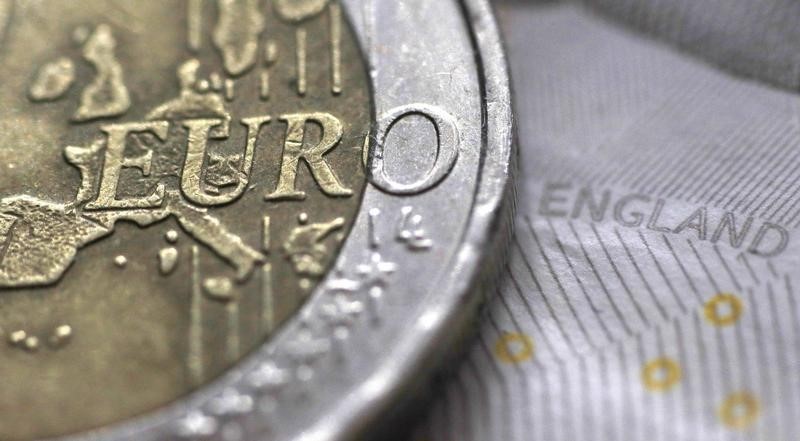Investing.com - The euro rose to fresh 10-month highs against the pound on Tuesday in quiet trade as recent indications that the recovery in the euro zone is deepening continued to underpin demand for the single currency.
EUR/GBP rose to 0.9074, the most since the most since October 12, 2016 and was at 0.9068 by 07.53 a.m. ET (11.53 a.m. GMT).
The euro has strengthened in recent week amid expectations that the European Central Bank will begin scaling back its monetary stimulus program in the autumn.
Data last week showed that the euro zone economy grew by a stronger than forecast 0.6% in the second quarter, double the 0.3% rate of growth in the UK over the same period.
Sterling has come under pressure since the Bank of England left interest rates on hold at record lows last week and cut its growth forecasts for wages and the economy amid ongoing headwinds from Brexit.
Uncertainty over the size of the UK’s ‘Brexit bill’ has also weighed on the pound.
The euro shrugged off disappointing German trade data released on Tuesday.
Figures earlier showed that German exports fell by 2.8% in June, snapping five months of gains. It was the biggest drop since August 2015. German imports dropped by 4.5%, the largest decline since January 2009.
That drove Germany’s trade surplus up to €21.1 billion, from €20.3 billion in May, a 10-month high.
The U.S. dollar index, which measures the greenback’s strength against a trade-weighted basket of six major currencies, dipped 0.15% to 93.16.
The index was holding well above last Wednesday’s 15-month trough of 92.41, but was off the high of 93.64 set on Friday after an upbeat U.S. jobs report revived expectations for another rate hike by the Federal Reserve this year.
The U.S. economy added 209,000 jobs last month, handily beating expectations for a gain of 183,000, while an uptick in wage growth indicated that inflationary pressures are firming.
Markets believe stronger inflation will enable the Fed to stick to its plans for a third interest rate hike this year.
The greenback had been pressured lower by a combination of worries over political turmoil in Washington and recent lackluster economic reports, which raised doubts over whether the Fed would be able to stick to its planned tightening path.
Investors were looking ahead to U.S. inflation reports later in the week for indications of whether the recovery in the dollar is sustainable in the longer term.
A report on U.S. producer prices for July is due out on Thursday and the consumer price inflation report will be released on Friday.
